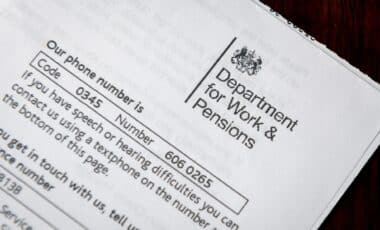Millions of UK pensioners rely on State Pension for retirement income, but few realise the full amount depends on National Insurance history. To receive the maximum weekly payment of £230.25, workers must meet strict contribution requirements over several decades.
Introduced in April 2016, the New State Pension was designed to simplify retirement benefits. Yet the amount retirees ultimately receive depends on how many qualifying years they have on their National Insurance (NI) record — a detail often overlooked until it’s too late.
Recent figures from the Department for Work and Pensions (DWP) show that over 13 million people receive State Pension payments across the UK.
But achieving the full amount is not automatic. Understanding how eligibility works is essential, particularly as State Pension age gradually increases and more individuals rely solely on public retirement benefits.
Full Pension Requires 35 Years of Contributions — With Exceptions
To be eligible for any State Pension under the current system, a person needs at least 10 qualifying years of NI contributions. This does not mean ten consecutive years. A year qualifies if an individual worked and paid NI, received credits for unemployment or caring responsibilities, or made voluntary contributions, according to the DWP.
However, receiving the full State Pension — currently £230.25 per week — requires around 35 qualifying years. The DWP emphasises that this figure is an average. Some people, especially those who were ‘contracted out’ of the additional State Pension before 2016, may need more years to reach the full entitlement.
Qualifying years are typically accumulated through paid employment. Workers must earn over £242 per week from one employer to pay NI. Those earning between £123 and £242 per week can still qualify if certain conditions are met. The self-employed also earn qualifying years through Class 2 NI contributions.
Individuals not working can still earn credits if they are claiming Child Benefit for children under 12, receiving Jobseeker’s Allowance, Employment and Support Allowance, or Carer’s Allowance.
Gaps in Records Can Be Corrected With Voluntary Contributions
Gaps in an individual’s NI record can prevent them from receiving the full amount of State Pension. These gaps may occur due to periods spent unemployed, studying, living abroad, or working in roles not subject to contributions. Fortunately, people can check their NI record and State Pension forecast via the GOV.UK website.
If gaps exist, it may be possible to purchase voluntary NI contributions to increase the total qualifying years. This can significantly affect the final pension entitlement, especially for those nearing retirement.
With the State Pension age set to rise to 67 between 2026 and 2028, and further increases anticipated, understanding contribution history is becoming increasingly vital. For many, the State Pension forms the backbone of retirement income. Verifying eligibility and planning early are essential to avoid shortfalls later in life.









